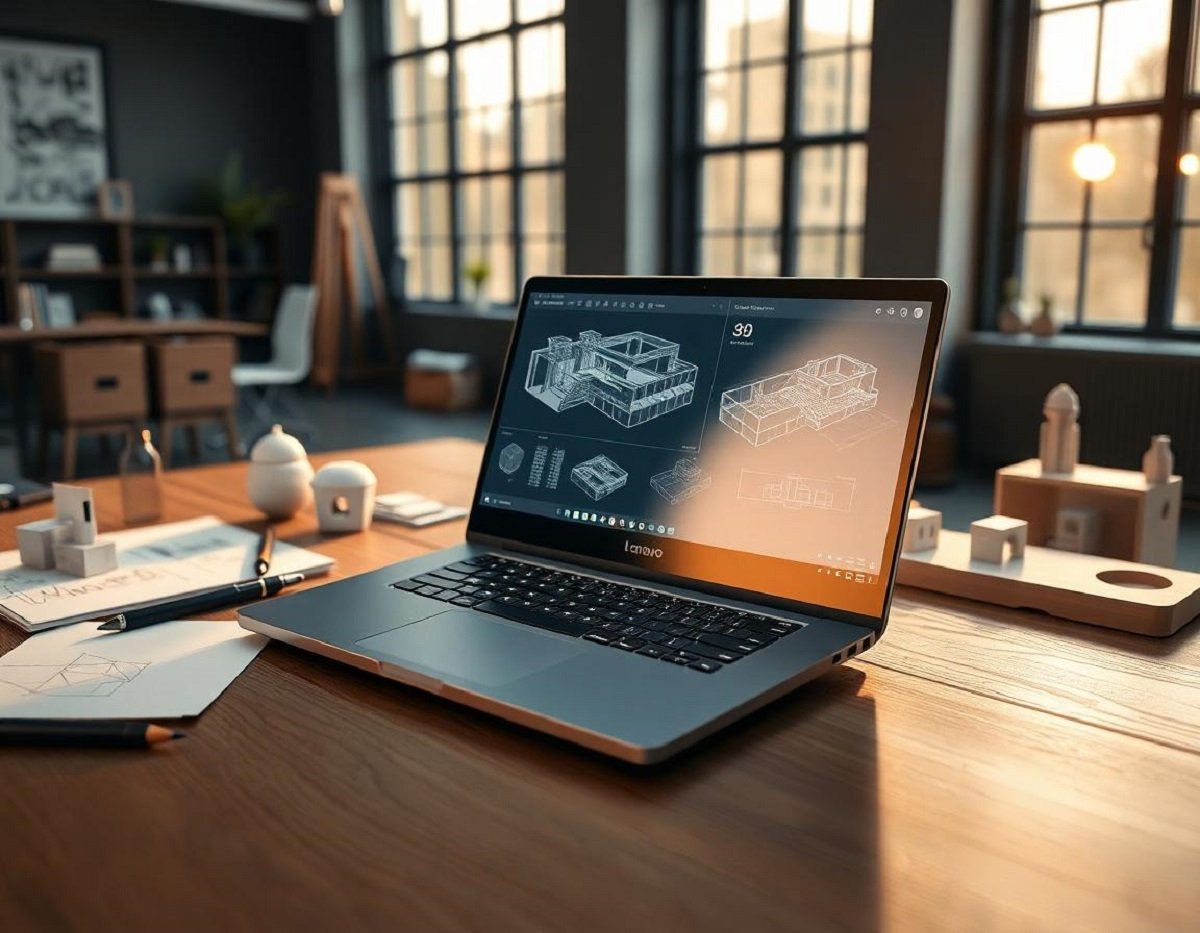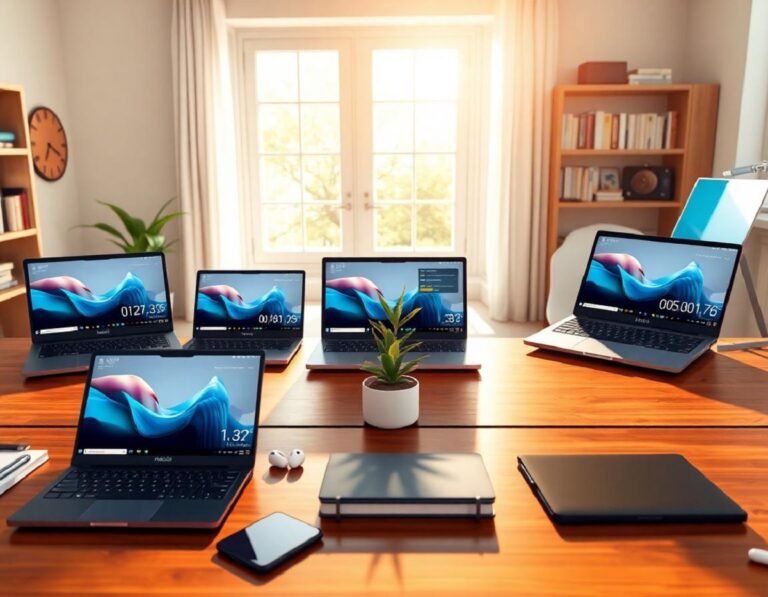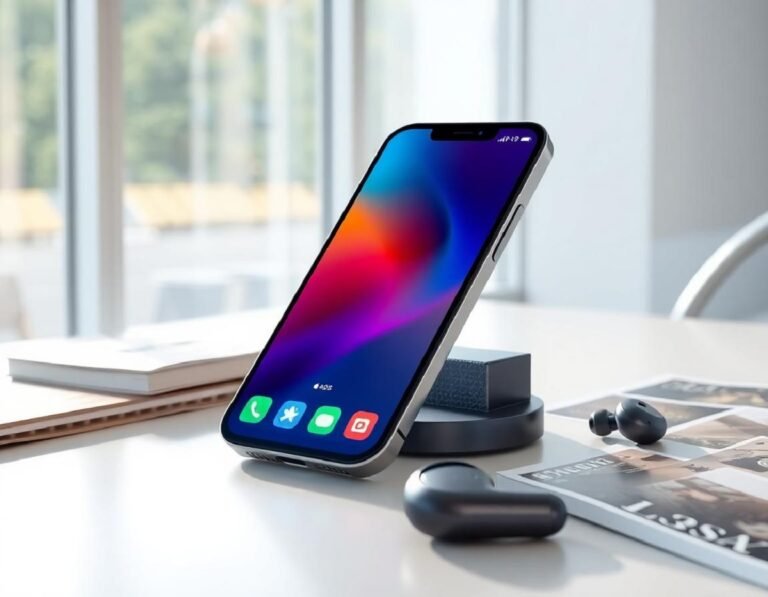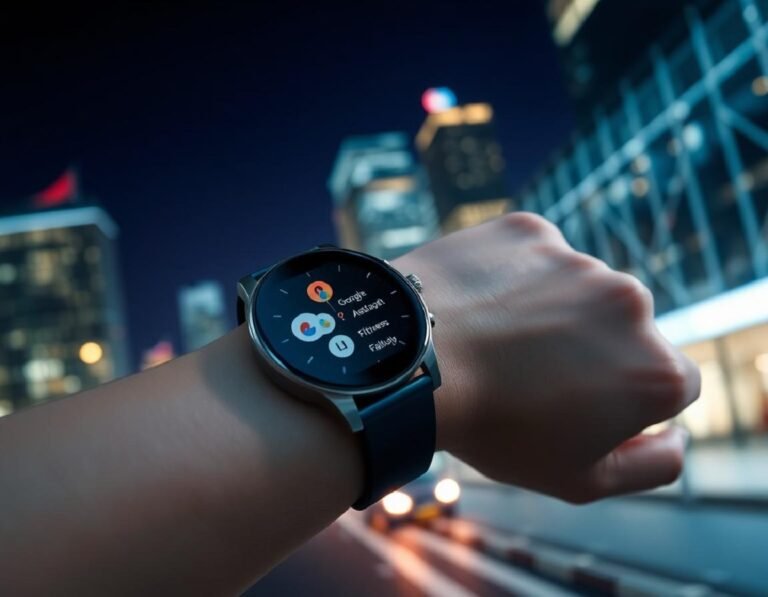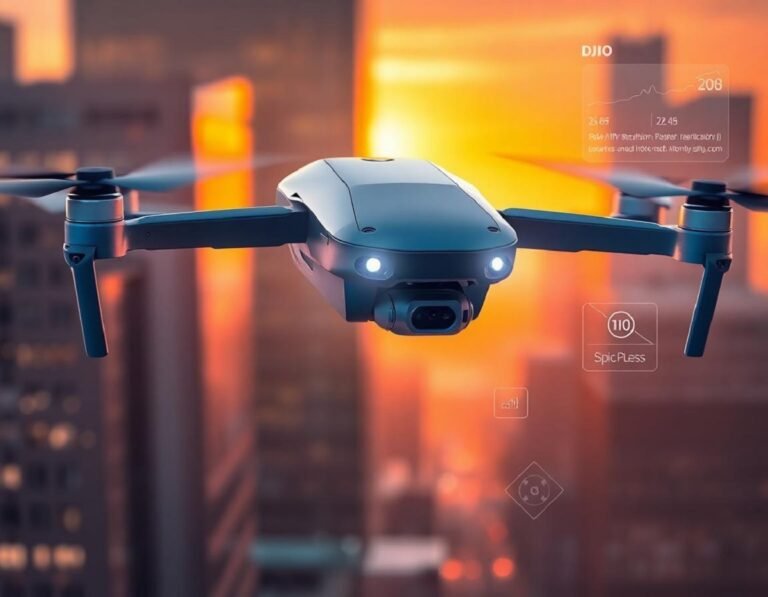Lenovo laptop for 3D modeling
The Best Lenovo Laptops for 3D Modeling [2024 Guide for Artists, Engineers, and Creators]
Bright colors explode across the screen as shapes twist and landscapes take form. In the heart of every 3D model, we find hours of focus, sparks of inspiration, and the pulse of powerful software at work. Artists, engineers, and students all know that every frame counts and a good laptop isn’t just a bonus, it’s a lifeline.
Choosing a Lenovo laptop for 3D modeling shapes how we work, create, and grow. The right machine keeps up with complex scenes, heavy textures, and real-time rendering. If we want our creative visions to move smoothly from imagination to reality, picking the right laptop matters more than ever.
What Makes a Lenovo Laptop Good for 3D Modeling?
Finding the right Lenovo laptop for 3D modeling feels a bit like picking out a sturdy sketchbook for an artist. Good tools don’t just work, they get out of our way and let creativity lead. The hardware inside shapes our designs, from smooth rotations of complex objects to final, jaw-dropping renders. Here’s what sets the best Lenovo laptops apart when pixels, polygons, and imagination collide.
Dedicated Graphics Cards and GPU Power
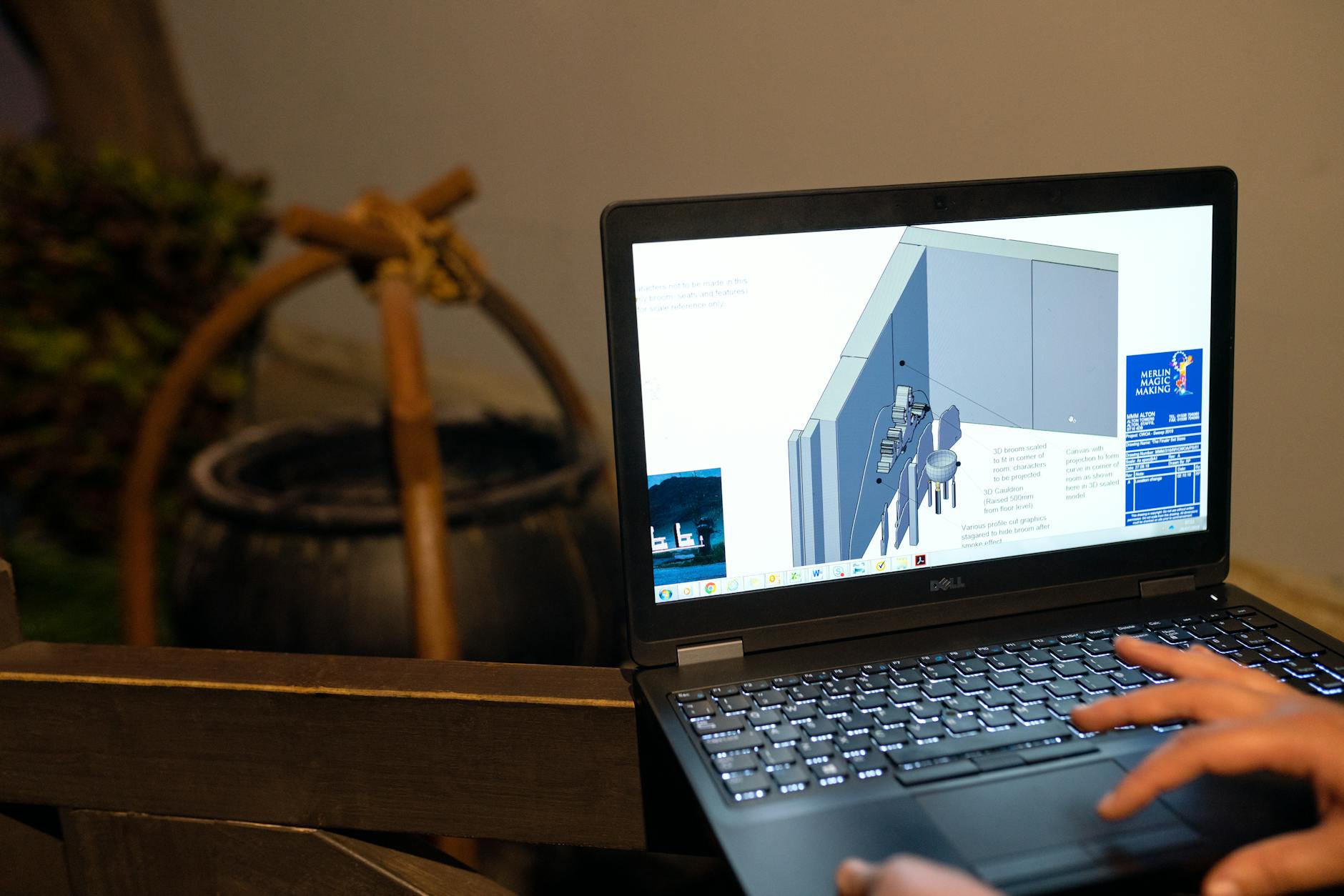
Photo by ThisIsEngineering
A strong GPU makes the difference between a slow crawl and smooth real-time editing in 3D apps. Dedicated graphics cards like NVIDIA RTX or AMD Radeon bring extra power for shaping, texturing, and previewing models. These cards handle millions of calculations each second, giving us the speed we need for tasks like:
- Sculpting High-Poly Meshes: Tweaking digital clay in ZBrush or Blender relies on the GPU to redraw details fast so every brush stroke feels responsive.
- Texturing and Lighting: Working in Substance Painter or applying live lighting effects can get sluggish without a capable graphics card.
- Real-Time Rendering: When making edits in tools like Autodesk Maya or 3ds Max, the GPU delivers instant feedback, making sure our scenes update in real time.
With a dedicated GPU, we can preview final results before ever hitting the render button, saving time and letting our ideas flow without barriers.
Fast Processors for Heavy Loads
Inside every quick 3D workflow sits a fast, multi-core processor. The CPU handles much of the rendering, calculations, and multitasking that we do daily. If our laptop’s processor is slow, waiting becomes the norm. With a fast Intel Core i7, i9, or AMD Ryzen chip, here’s how things look for us:
- Rendering Scenes: Big renders that used to take hours can finish in minutes, freeing up our evenings.
- Working on Multiple Projects: We can keep reference images open, test results in simulation software, and chat with our team without freezing up the machine.
- Adapting to New Tasks: From baking lighting to exporting animations, a quick CPU keeps the pace steady—even when things get complex.
Think of the CPU as the engine of our digital workshop. The faster it runs, the less we wait, and the more we get done.
RAM and Storage: Keeping Projects Smooth
3D scenes eat up memory quickly. Every object, texture, light, and undo step needs a spot in RAM. When RAM runs out, our system starts to lag or even crash. Fast SSD storage also loads project files and software much quicker, slashing downtime between tasks.
Here’s how more RAM and speedy storage help daily:
- Large Scenes: When designing architectural plans or game assets, 16GB is the bare minimum—32GB or more means fewer slowdowns with heavy files.
- Batch Renders: Exporting many images sequentially demands both memory and quick saving, which fast SSDs can handle with ease.
- Multi-Software Workflows: We can bounce between Blender, Photoshop, and our web browser without closing one just to keep the laptop responsive.
We get a smoother ride through big, complex scenes and can trust that nothing gets lost from short-term memory.
Display Quality: Every Pixel Counts
Accuracy starts with what we see. On a high-quality Lenovo display, every edge is crisp and colors look real. For 3D modelers, this isn’t a luxury—it’s a must.
The best screens give us:
- High Resolution: More pixels mean sharper textures, easier selection of tiny vertices, and detailed sculpting. A 4K panel, or even 2560×1440, lets us work closely on fine parts of our model.
- Wide Color Range: Accurate colors help with texturing, making sure skin tones, metals, and fabrics show up as we intend.
- Consistent Brightness: Even lighting across the display helps us spot mistakes in shadows or highlights, leading to a cleaner, more balanced result.
With a good screen, we can trust what we see matches how our project will look for the rest of the world. Nothing beats the confidence of knowing our vision stays true from laptop to portfolio.
Best Lenovo Laptops for 3D Modeling in 2024
Great 3D modeling demands more than just raw specs. The laptop we choose shapes daily flow, empowers quick edits, and builds trust in our process. In 2024, Lenovo shines with a variety of options for every user’s needs, from heavy-duty workstations to portable powerhouses. Below, we break down the best Lenovo models for serious 3D work so we can match our workflow, pace, and style.
Lenovo ThinkPad P Series: The Mobile Workstation
When we picture a laptop ready for any studio or jobsite, the ThinkPad P Series comes to mind. Built for professionals, these machines are true workhorses, combining strength with polish.
- Professional Graphics: Most ThinkPad P models ship with NVIDIA RTX professional GPUs, perfect for handling large CAD models and real-time rendering in 3D design tools.
- Rugged Build: Durable magnesium alloy frames and MIL-SPEC certification mean these laptops can survive travel, frequent setup, and the bumps of daily life.
- Top-Tier Components: Fast Intel Core i7/i9 or Xeon CPUs, memory configurations up to 128GB, and multiple SSD slots support even the heaviest scenes.
- Easy Expandability: Tool-less panels allow quick upgrades for RAM and storage, stretching the machine’s lifespan and versatility.
These laptops are for those of us who model full-time, juggle complex scenes, or need guaranteed uptime at the studio or on site. Whether animators, industrial designers, or engineers, we can trust the P Series to deliver stable performance year after year.
Legion Series: Power for Creators and Gamers

Photo by Tobias Dziuba
If we want a laptop that feels as comfortable editing a 3D model as it does relaxing with a game, the Lenovo Legion series is a smart choice. These laptops are known for balancing strong performance with bold design.
- High-Performance GPUs: NVIDIA GeForce RTX cards inside most Legion models make them great for both creative suites and modern gaming titles.
- Robust Cooling: Advanced thermal systems keep the laptop running quietly, even under long render sessions or when batch exporting files.
- Strong Processors: Recent Legion laptops feature up-to-date Intel Core or AMD Ryzen CPUs, perfect for sculpting, painting, and multitasking.
- Ample Storage: Large SSD options and plenty of ports let us keep project files, reference images, and games at our fingertips.
A Legion is well-suited to students balancing coursework and passion projects, freelancers working from home or on campus, and creators wanting power without the more serious look of a workstation. These laptops deliver fast performance at a competitive price, with enough style for anyone in creative arts or design.
Slim and Light Choices: Yoga and Slim Series
For those of us constantly on the move, hauling a heavy workstation isn’t always an option. Enter Lenovo’s Yoga and Slim series, which merge portability with smart processing and vivid displays.
- Ultra-Portable Design: Yoga and Slim models are light to carry, often weighing under 3 pounds, and clock in with thin profiles that slip easily into any backpack.
- Convertible Flexibility: Many Yoga models rotate 360 degrees, letting us draw in tablet mode or sketch ideas in the field.
- Good Core Performance: With Intel Evo-certified CPUs and integrated or entry-level dedicated graphics, these laptops smoothly handle lighter 3D modeling, scene reviews, and quick edits.
- Bright, Colorful Screens: High-resolution touch displays make it easier to review details or share work with clients, classmates, or friends.
While we can’t expect them to breeze through huge engineering simulations, the Yoga and Slim series are perfect for architects visiting clients, students taking notes and building models, or anyone updating portfolios between classes or commutes. Light, yet capable, these laptops help us stay creative anywhere life takes us.
Choosing the Right Lenovo for Your 3D Modeling Needs
The sweet spot for a 3D modeling laptop depends on who we are and how we work. Maybe we’re rendering high-detail car engines, sketching new landscapes for a class, or creating 3D art between flights. Matching our work style and budget with the right Lenovo brings both comfort and confidence. Let’s break down which choices fit each path.
For Professional Artists and Engineers: Direct pros to rugged machines, high RAM and GPU, color-accurate displays
When 3D modeling pays the bills or the project has no room for error, steady power and true colors matter most. We need rigs built like tanks that keep pace from studio to site.
- Strong Graphics and Loads of RAM: Top-of-the-line ThinkPad P Series machines stand up to sprawling CAD assemblies, animation rigs, and high-poly sculpts. We suggest picking models with at least 32GB, if not 64GB, of RAM.
- Professional GPUs: NVIDIA RTX A-series cards chew through complex scenes and speed up workflows in apps like Maya, Rhino, and SolidWorks.
- Color-Accurate Displays: When printing, rendering, or handing files to a pro team, screens with wide color gamuts (like 100% AdobeRGB or P3) avoid ugly surprises in the final output.
- Rugged Design: Spills, bumps, or travel are less stressful thanks to MIL-SPEC certified bodies and spill-resistant keyboards.
A ThinkPad P1 Gen 6 or P16 Gen 2 stands as a go-to for pros who want zero guesswork and rock-solid performance.
For Students and Beginners: Point out good affordable models that balance price with features
We all remember our first big project in 3D. Budgets are tight, but tools still need to be quick and reliable. Affordable Lenovo models bridge the gap between price and power.
- Legion 5 or IdeaPad 5 Series: Both lines offer solid performance for Blender or Autodesk Maya without wrecking our wallets. The Legion 5 gets bonus points for its gaming GPU and smooth keyboard.
- Upgradable RAM: Many student-friendly models let us expand memory later, stretching value as our needs grow.
- Full-HD Displays: Clear enough for sculpting and texture work, without the price hike of a 4K panel.
- Slim but Sturdy: No need to lug a brick across campus. Some Yoga or Slim 7 models handle simple 3D work while saving us from sore shoulders.
Budget models don’t mean barebones—many come loaded with speedy SSDs and current Intel or AMD chips. For students, it pays to keep an eye out for bundle deals or education discounts.
For Remote and Travel-Based Creators: Highlight slim lines, solid battery life, decent graphics, and bright screens
Some of us work wherever we find a desk—or sometimes, just a comfortable sofa or airport seat. A heavy workstation won’t cut it when mobility rules the day.

Photo by Leonid Altman
- Lenovo Yoga Series: Flexible, lightweight, and often under three pounds, these laptops are perfect for tossing in a backpack.
- Long Battery Life: Models like the Slim 7i or Yoga 9i often deliver up to 10 hours of use, supporting quick sketches or edits on long trips.
- Decent Dedicated Graphics: While not as beefy as workstations, GPUs like the NVIDIA RTX 3050 offer enough power for on-the-go reviews, light modeling, or rendering previews.
- Bright, Easy-to-See Screens: Even in sunny cafes or airport lounges, high-nit displays keep our work clear and colors true.
Travel-friendly Lenovos balance power, portability, and endurance so our creativity isn’t chained to a single desk. We don’t always need the loudest engine when a silent runner keeps us in motion.
Choosing a Lenovo for 3D modeling means more than just ticking off specs. It’s about work style, routine, and where inspiration strikes. By thinking about what matters to us—be it muscle, value, or mobility—we find a laptop that’s not just a tool, but a trusted sidekick for every render, revision, and road trip.
Conclusion
Each Lenovo laptop for 3D modeling is more than a spec sheet, it’s a promise to stay on pace with our brightest ideas. The best choice powers late nights, tight deadlines, and those sparks of inspiration that never hit on schedule. When we match our needs and ambitions to the right machine, creating becomes smoother and each project feels closer to what we imagined.
Let’s pick a laptop that moves with us, wherever we build and wherever our work takes us. Our next breakthrough is waiting—and the right Lenovo can help get us there. Thanks for reading, and we’d love to hear what you’re building or planning next. Share your experiences below and keep the creative energy going.

